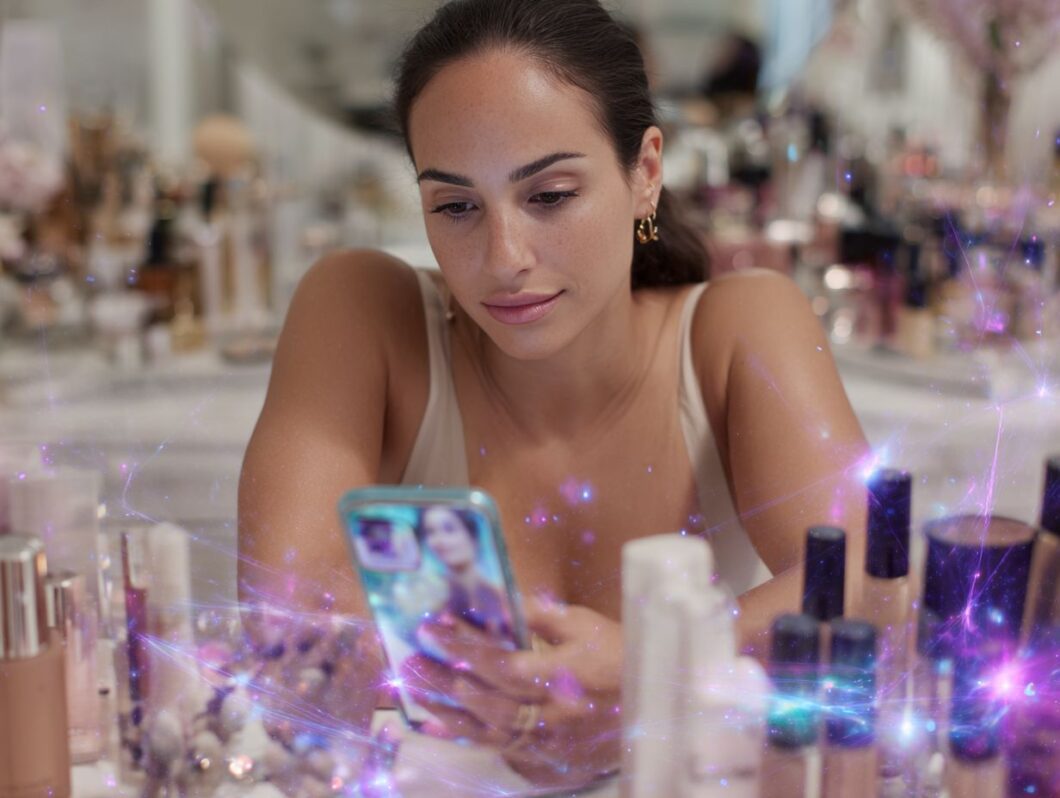As I scroll through my favorite beauty apps, I can’t help but marvel at the precision of AI beauty assistants-tools that promise to revolutionize how we choose our products. But as these algorithms evolve, I find myself questioning: can they truly replace the nuanced advice of a seasoned beauty advisor? In this exploration, I’ll delve into the advancements in AI technology, compare its strengths against human expertise, and examine how consumers perceive this shift. Join me as we navigate the future of beauty advice.
Definition and Overview
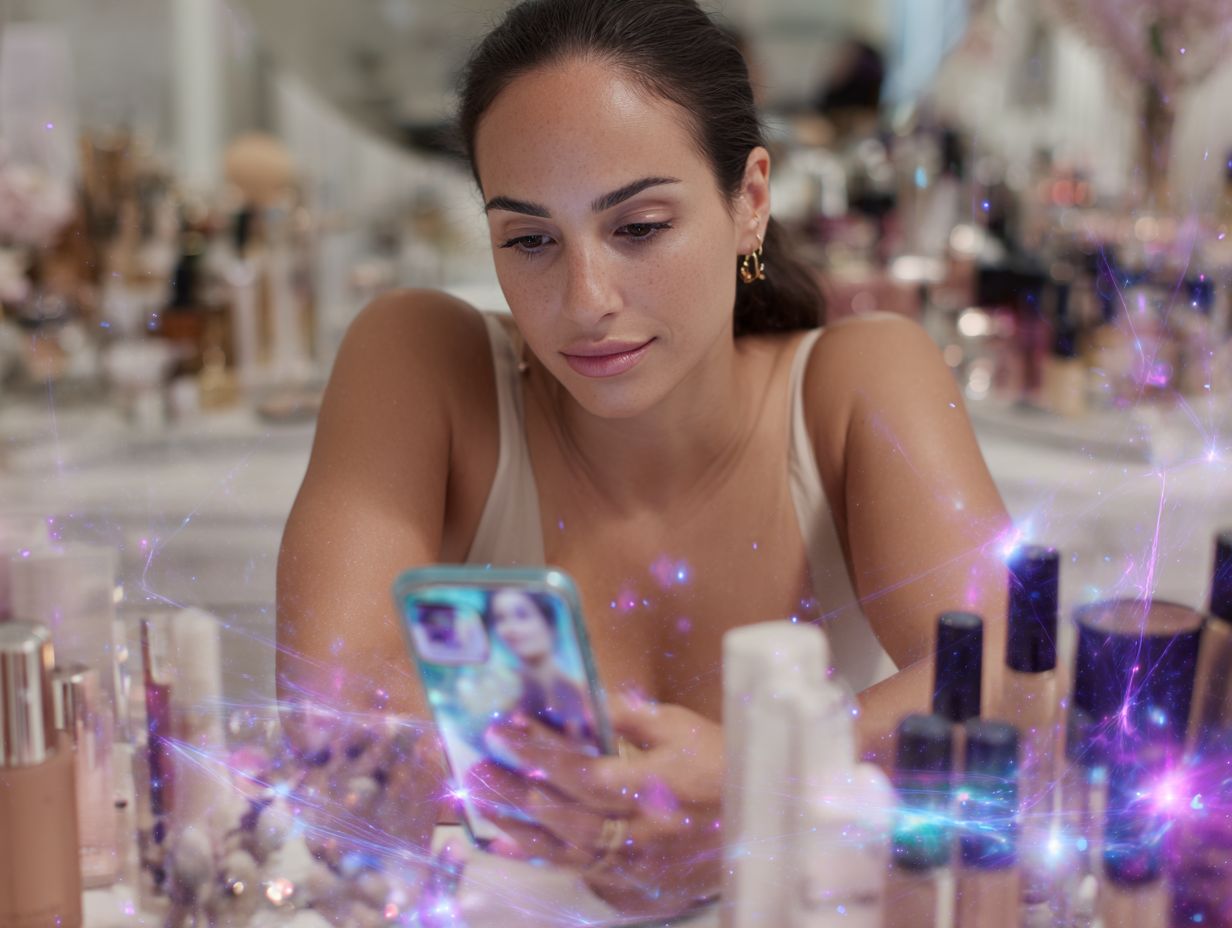
An AI Beauty Assistant is a sophisticated digital tool that utilizes algorithms to deliver personalized skincare and makeup recommendations tailored to user data and preferences. These virtual beauty advisors employ advanced technologies such as augmented reality and machine learning to enhance user experience.
For example, L’Oreal’s Virtual Try-On technology enables users to visualize how various makeup products will appear on their skin in real time, significantly enhancing the shopping experience and offering personalized beauty insights. By analyzing facial features, the interface provides customized product suggestions and application techniques.
Users have the option to upload a photo or use a live camera feed to engage with the tool seamlessly, offering digital consultation experiences. This technology is instrumental in creating personalized routines that cater to individual skin types and tones.
Technological Advancements in AI
Recent advancements in machine learning and data analysis have equipped AI Beauty Assistants with the ability to provide more sophisticated and accurate beauty advice than ever before. For example, tools like IBM Watson for Beauty utilize visual recognition technology to analyze a user’s skin type and deliver personalized product recommendations.
By leveraging predictive analytics, I have found that these assistants can anticipate users’ future needs based on their purchase history and preferences. Another noteworthy example is ModiFace, which enables live virtual try-ons, significantly enhancing consumer engagement.
These advancements not only improve the accuracy of beauty consultations but also foster a more interactive shopping experience, allowing brands to effectively retain their customers.
The Role of AI in the Beauty Industry and Beauty Technology
I recognize that AI plays a significant role in the beauty industry, offering a variety of applications that range from personalized recommendations to interactive virtual experiences.
This technology is fundamentally transforming the way consumers engage with beauty brands, influencing consumer preferences and beauty trends.
Personalization and Customization
I find that AI-backed personalization techniques significantly enhance customer satisfaction by providing tailored product recommendations based on individual user data and preferences, further integrating beauty personalization technologies.
In my experience, beauty companies like Sephora effectively leverage AI tools such as Dynamic Yield to analyze consumer behavior and refine their marketing strategies, utilizing predictive analytics in beauty.
By tracking purchasing patterns and browsing histories, Sephora is able to generate personalized recommendations that appear on product pages and in their email campaigns.
For example, if a customer frequently purchases vegan products, they may receive promotions for similar items, which ultimately enriches their shopping experience.
Additionally, utilizing chatbots for real-time assistance not only helps address customer queries but also suggests products, incorporating automated customer service to further customize the journey and increase conversion rates.
Virtual Beauty Try-Ons and Simulations
Virtual try-on technologies, such as those provided by ModiFace and YouCam Makeup, enable me to experience products virtually before making a purchase, significantly enhancing user engagement and facilitating virtual beauty experiences. These tools utilize augmented reality (AR) to superimpose products onto my images in real-time.
Renowned brands like L’Oral and Sephora have effectively implemented these augmented beauty experiences, leading to increased online sales and reduced return rates.
For example, Sephora’s Virtual Artist allows me to test various lip shades prior to purchasing, which enhances my confidence in my choices. By integrating these technologies, I can receive personalized recommendations that ultimately boost my satisfaction as a customer.
When considering virtual try-ons, it’s essential to prioritize user-friendly interfaces and ensure seamless integration with my e-commerce platform to achieve optimal results, focusing on accessibility in beauty.
Comparing AI and Human Beauty Advisors and Human Advice
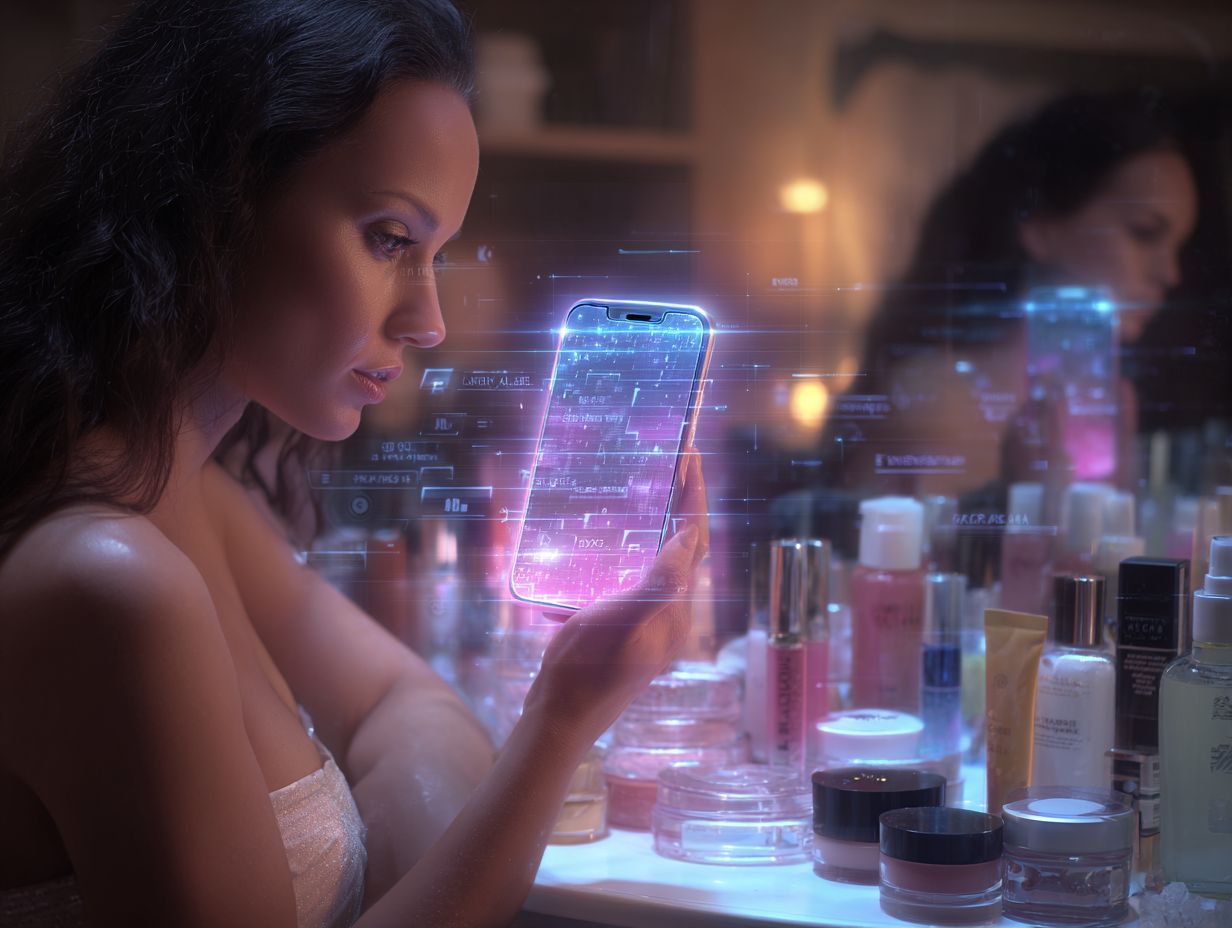
In my analysis of AI beauty assistants versus traditional human beauty advisors, I have identified distinct strengths and limitations that significantly impact consumer decisions regarding personalized beauty care, highlighting the role of AI decision-making.
Strengths of AI Beauty Assistants and AI Algorithms
AI beauty assistants demonstrate remarkable scalability and consistency, enabling me to provide instant responses and personalized recommendations without the constraints faced by human advisors.
They enhance user experiences by utilizing algorithms that analyze various skin types and individualized preferences. For example, with tools like YouCam Makeup or L’Oreal’s Modiface, I can offer customers the opportunity to virtually try on different makeup looks.
These platforms also actively incorporate user feedback to continuously refine their suggestions. Many of these AI assistants are seamlessly integrated with e-commerce systems, allowing users to purchase recommended products directly through the chat interface, thus enhancing the overall shopping experience.
This integration of technology with a personalized approach can significantly elevate customer satisfaction and retention, enhancing beauty service automation.
Limitations of AI Technology and AI Ethics
Despite the advantages that AI beauty assistants offer, I recognize their limitations, such as a lack of empathy and potential challenges in understanding nuanced consumer needs.
For instance, I have observed that AI systems often struggle with cultural beauty standards, which can vary widely across different communities. A recommendation engine that suggests skincare routines based on general data may overlook specific skin types influenced by ethnicity.
Additionally, deficiencies in understanding emotional context can lead to mismatched advice. For example, recommending a bright lipstick to someone navigating sensitive life events could come across as inappropriate.
To enhance these systems, I believe implementing feedback mechanisms that allow users to provide input on recommendations is essential. This approach would help make the AI more personalized and culturally aware.
Human Touch and Emotional Intelligence in Beauty
While AI can analyze data with impressive efficiency, I believe that human beauty advisors bring emotional intelligence and personal connections that are essential for fostering brand loyalty, enhancing emotional connection in beauty.
For example, a skilled beauty advisor can read a customer’s mood through their body language and adjust their recommendations accordingly. By utilizing open-ended questions, they can uncover a client’s specific needs and preferences.
Additionally, tools such as customer relationship management (CRM) systems give the power to beauty advisors to track interactions, enabling personalized follow-ups and tailored advice. This approach not only enhances the shopping experience but also helps build trust, making clients more inclined to return, rewarding personalized marketing efforts.
Consequently, I recognize that the value of human connection in beauty advice is truly significant.
Consumer Perception of AI Beauty Assistants and AI Impacts on Beauty
I observe that consumer perception of AI beauty assistants is quite mixed. While some users readily embrace the technology and its capabilities, others raise valid concerns regarding trust and reliability.
Trust and Reliability Issues
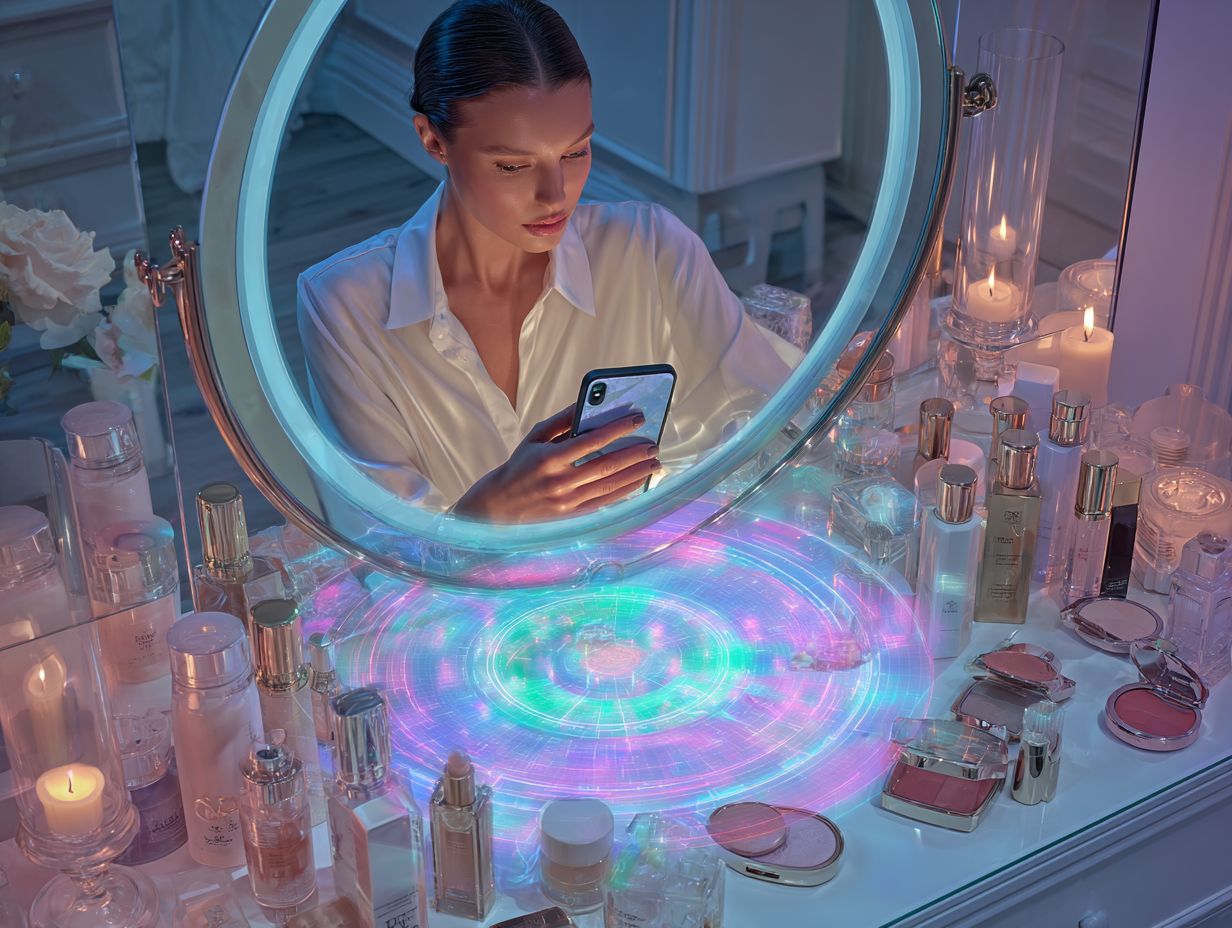
Issues of trust and reliability play a significant role in how I perceive AI beauty assistants, directly influencing my willingness to adopt these tools. To effectively address these concerns, implementing data privacy measures is crucial. I can implement several strategies.
- First and foremost, enhancing data security is essential; employing encryption protocols and maintaining transparent data handling policies will significantly boost consumer confidence.
- Additionally, providing accurate recommendations through continuous machine learning updates not only improves the user experience but also fosters trust.
- I should also encourage user reviews and testimonials, as showcasing real experiences can build credibility.
- Furthermore, offering a clear explanation of the AI’s decision-making process helps demystify the technology, allowing users to understand how recommendations are generated.
By implementing these tactics and focusing on AI limitations, I can collectively work to foster trust and enhance adoption rates.
Acceptance Among Different Demographics and User Demographics
I have observed that acceptance of AI beauty assistants varies significantly across different demographics, with younger consumers demonstrating a greater willingness to engage with AI solutions, highlighting demographic targeting strategies.
Recent studies indicate that 72% of consumers aged 18-24 are open to using AI beauty assistants, in stark contrast to only 45% of those over 50.
Education also plays a vital role in this acceptance. Individuals with a college degree show a 60% acceptance rate, while that number drops to 40% among those with only a high school education.
Additionally, familiarity with technology significantly influences these statistics; tech-savvy users are 30% more likely to utilize AI tools compared to those who are less experienced.
As a result, I believe it is essential for businesses to tailor their marketing strategies to effectively target younger and more educated demographics.
The Future of Beauty Advice
The future of beauty advice is looking promising as it combines AI technology with human expertise. This integration is paving the way for innovative hybrid models that significantly enhance user experiences.
Trends in Beauty and AI Development
Emerging trends in AI development, such as enhanced visual recognition, beauty image analysis, and advanced chatbots, are poised to redefine the beauty consultation landscape. For example, augmented reality (AR) technologies, like L’Oreal’s Virtual Try-On, allow me to experiment with makeup tutorials in real-time through my smartphone.
Machine learning algorithms further enhance personalization by analyzing my preferences and skin type, resulting in tailored skincare recommendations. Tools like YouCam Makeup integrate these advancements, enabling not only virtual try-ons but also personalized beauty tips based on my data.
These innovations are transforming the way I interact with beauty brands, optimizing the beauty experience, and creating a more engaging and customized shopping experience.
Potential for Hybrid Models
The potential for hybrid models that combine AI technology with human expertise presents an opportunity to develop more personalized and effective beauty advice solutions, enhancing beauty perception and consumer trust.
For example, companies such as Sephora have successfully integrated beauty chatbots with beauty advisors, enabling customers to receive prompt product recommendations tailored to their skin types and preferences.
I believe that brands can effectively leverage tools like ChatGPT to manage initial inquiries, allowing human advisors to focus on more complex consultations that require a personal touch, improving AI decision-making and chatbot effectiveness.
Additionally, platforms like Glossier utilize user-generated content to enhance their AI-driven suggestions and beauty problem-solving. By ensuring that both AI and human elements operate in harmony, brands can significantly improve customer engagement and beauty community interaction while preserving the personal connection that fosters loyalty.
Frequently Asked Questions
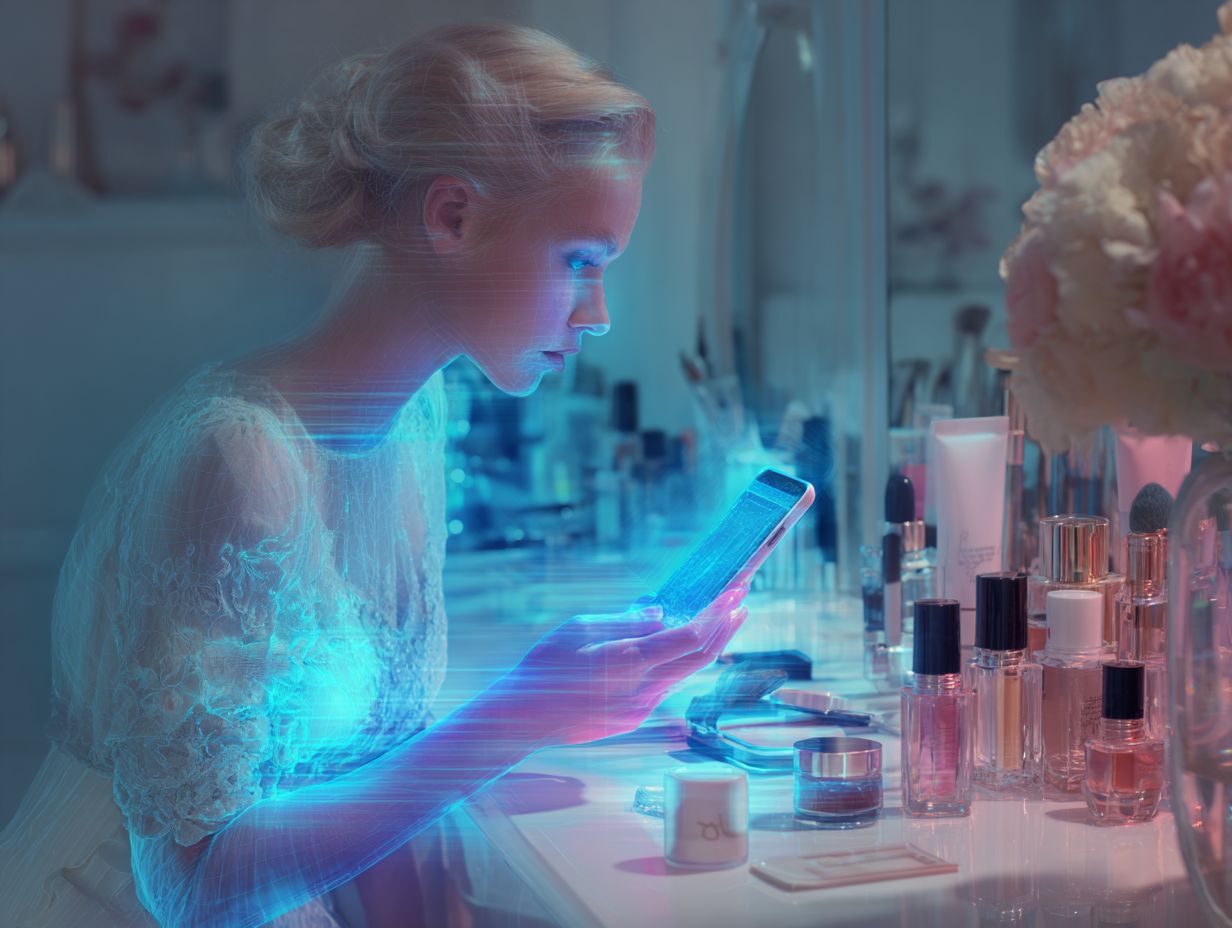
1. How do AI beauty assistants work?
AI beauty assistants use algorithms and machine learning to analyze a user’s skin or features and recommend personalized beauty products or routines.
2. Are AI beauty assistants replacing human advice in beauty retail?
While AI beauty assistants can provide helpful recommendations, they are not meant to replace the expertise and personalized advice that human beauty advisors can offer.
3. Can AI beauty assistants accurately recommend products for all skin types?
AI beauty assistants can only make recommendations based on the data, AI algorithms, and machine vision they are programmed with. They may not be able to accurately cater to all skin types and concerns.
4. Do AI beauty assistants take into account individual preferences and concerns?
Yes, AI beauty assistants can take into account a user’s preferences and concerns, but they may not be able to fully understand the nuances and individuality of each person’s skin and beauty needs.
5. Are AI beauty assistants cost-effective compared to human beauty advisors?
AI beauty assistants can provide recommendations for free, but they may not be able to fully understand complex concerns and provide the same level of personalized advice as a human beauty advisor.
6. Are AI beauty assistants biased towards certain brands or products due to AI limitations?
AI beauty assistants are only as unbiased as the data, AI ethics, and algorithms they are programmed with. It is important to do additional research and not solely rely on AI beauty assistant recommendations.


